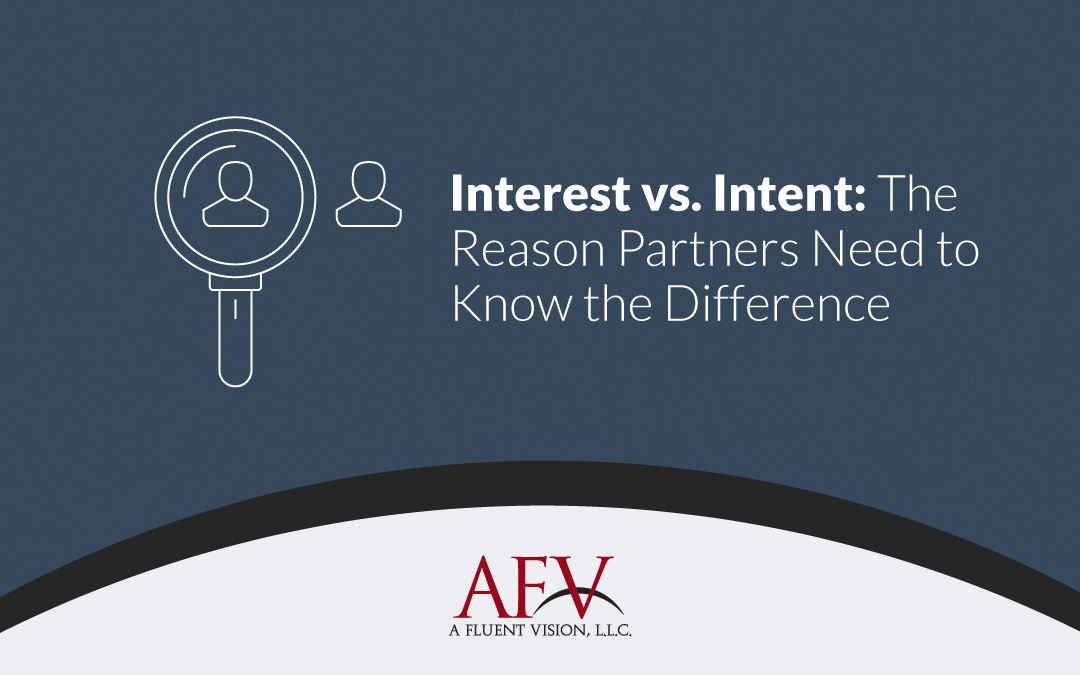The difference between interest and intent may seem obvious. But when it comes to partner marketing, it’s a whole different story.
Manufacturers and distributors build enablement programs to help partners grow their business. Partners inherently want to grow their business. Both have the same objective here, but no two partners have the same approach.
What can be applied to one partner may not always work for another. This can create challenges for channel program managers around program guidelines and in identifying which partners should qualify for a particular program.
Taking a Closer Look
Let’s start with taking a closer look at what interest and intent actually mean. These definitions are important because when it comes down to evaluating the success of your partner program, you don’t want to be stuck with inflated numbers. Results that don’t match pipeline reporting or expectations is never a good sign.
Interest – the state of wanting to know or learn about something
Intent – a general desire or plan to accomplish something, or in this case, make a purchase
Why does this matter for partner marketing? It is important for partner development to first have a clear understanding of the challenges end users face. Properly identifying marketing qualified leads (MQL) will have a significant impact on partners’ understanding of the difference between end user interest and intent.
Buyers demonstrate interest by continuously engaging with a partner’s marketing campaigns. That engagement could come in many different forms. This is why standardizing the quality of a lead is so important. Improving lead qualification standards can have a significant impact on the effectiveness of sales.
Understanding the difference between interest and intent is the difference between closed business and lost opportunity.
Why Does MQL Matter in the Channel?
If there are no standards for what defines MQL then you’re leaving it up to partners to define that aspect of your program. As a program manager, that inevitably impacts your overall success.
Channel programs should have their own criteria as to what qualifies a lead in order to set a standard for partners to reference.
When thinking about how you want to define MQL for your partners, keep in mind that marketing and sales go hand-in-hand. There is a difference between MQL and sales qualified leads (SQL). Each should be defined accordingly.
Coming to an agreement over what defines a lead will have an impact on both sales and marketing’s performance. This is equally true for the relationships between partners, distributors and manufacturers.
Guide the Way…Literally
Clarify and communicate the standards you set for lead qualification. Do not let the guidelines of your channel program be dictated by your partners.
Successful channel program managers know the needs and challenges of their partners. By offering the partners a clear and concise definition of what qualifies a lead, both you and partners will be able to clearly evaluate their success.
Don’t just enable partners to grow their business by utilizing your program. Build a relationship with partners and become a valuable resource for them. Take a closer look at your program’s lead standards; partners appreciate clear direction. Don’t just show interest in enabling partners, show intent.

